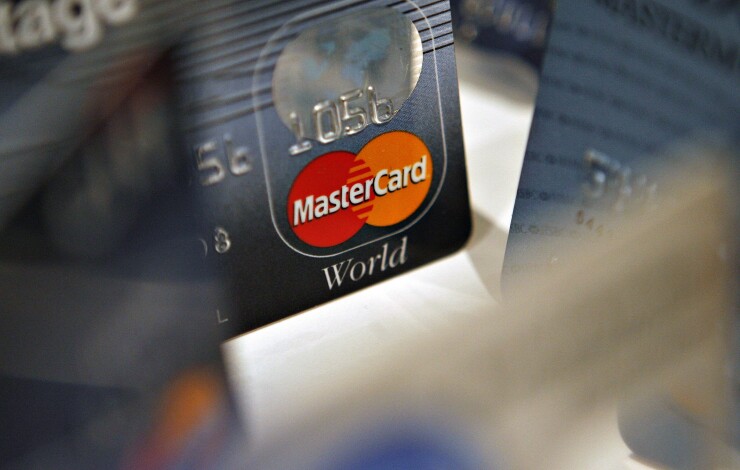There are still regions where contactless and EMV cards are slow to roll out, and Mastercard is working to bring these markets up to speed so that they are ready for future innovations.
"Efforts to encourage the deployment of EMV chip have been gathering pace around the world, and the technology now accounts for more than 80% of global 'card present' transactions," said Ben Gilbey, senior vice president, digital payments and labs for Asia Pacific at Mastercard. "However, there are residual customers and countries in each region that still do not support EMV."

Mastercard has set a five-year plan to address the other 20%, making "tap and go" contactless technology standard by 2023. Beginning later this year, the Purchase, N.Y.-based company will require a series of card and terminal upgrades across Europe, Latin America, Asia Pacific, Africa and the Middle East.
The goal is to encourage ubiquity — a Mastercard payment in one country should strongly resemble that in another — and to make it easier to update payment experiences to include mobile wallets, the Internet of Things and omnichannel shopping.
"[Not supporting EMV] results in fraud migration patterns and transitional arrangements which remain in place, as well as an inconsistent experience for consumers, especially when traveling abroad," Gilbey said.
The card network currently has of 8 million contactless locations in 111 countries; Mastercard did not say how many terminals it still needs to see upgraded. Mastercard's requirements apply to all of its branded cards accepted by point of sale terminals outside of the U.S. and Canada.
Mastercard has several initiatives underway to address the maturation and diversification of payments, as transactions move away from cards to mobile phones and other connected devices.
These changes have created what
Among the network's initiatives is adopting more forms of authentication in
Transportation is one of the key markets, since transitioning to an open-loop payment system from a closed-loop ticketing system enables commuters to develop new habits. For example, merchants connected to train and bus stations could accept the same cards used to pay for fares.
Mastercard has been working with more than 100 cities — including London, New York, Singapore, Sydney and Mexico City — on new transit technology to enable contactless and mobile payments. In doing so, Mastercard hopes to cut operational costs, feed more digitized "smart city" initiatives and encourage digital payments outside of the transit systems. Having a standardized contactless interface makes it easier to deploy strategies across different cities.
"A set of unified standards is important to building global ubiquity," said Michelle Evans, an analyst at Euromonitor International. Japan, for example, has faced hurdles in building a proximity mobile payments market because it uses an NFC system that is not compatible with other countries, she said. "When





